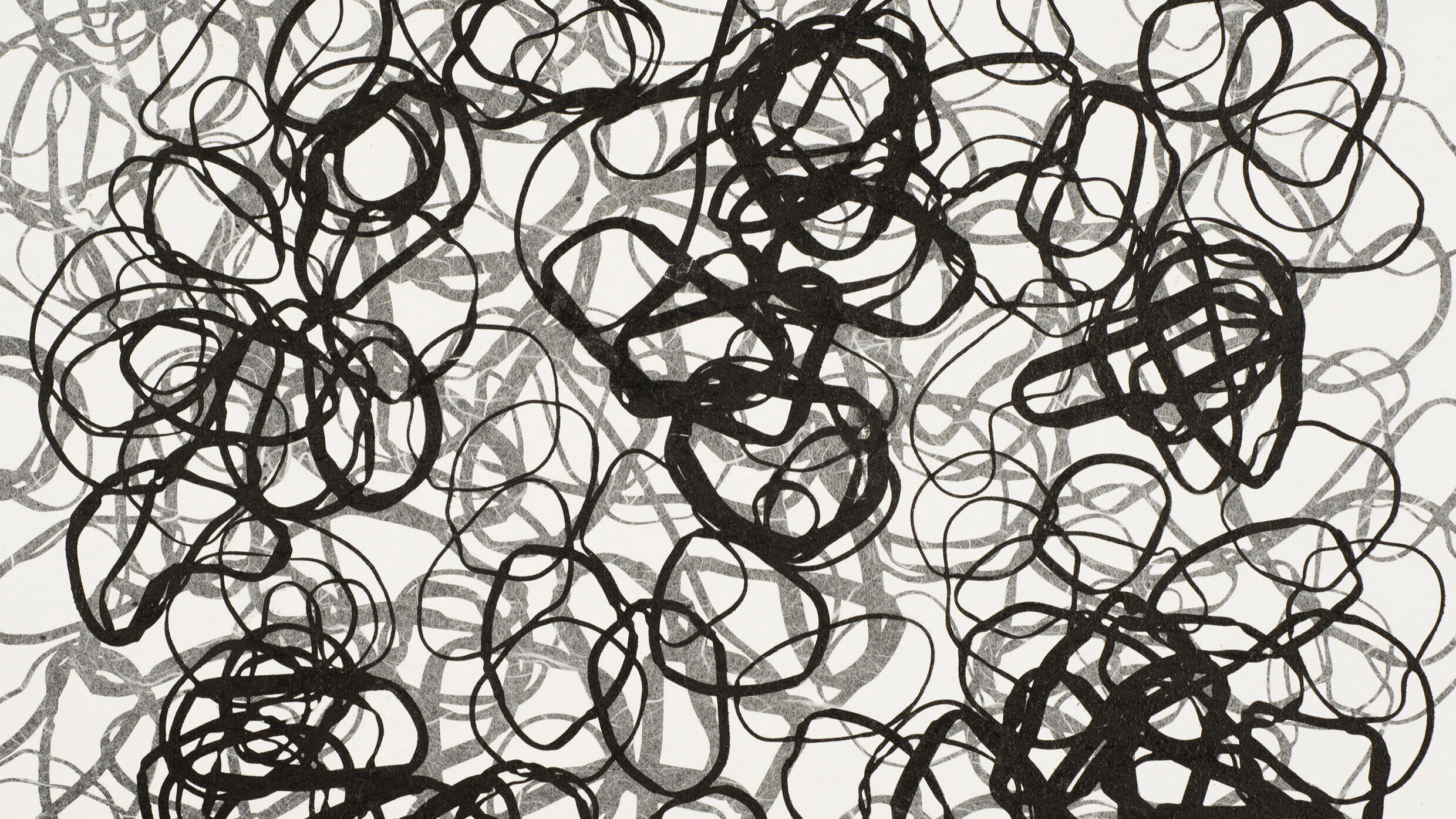Composed for Andrea Graves as part of her Contemporary Connections project of premiers of works for alto flute.
Texturologie 2: Density 10.6 (2003)
alto flute, computer
12:00
Performance by Andrea Graves, alto flute, Electronic Music Midwest, 2004.
Program Note
“Texturologie” is the name of a series of paintings by Dubuffet. I thought 10.6 is the specific gravity (I don’t really know what that means) of antimony, but I looked it up wrong. (Ask a flautist or composer about the “density” reference.) The sound of the alto flute is analyzed by the computer (using Max), and information about the performance—pitch, loudness, activity density, contour, register, and to some extent articulation—is mapped onto such parameters of the computer music as brightness, delay characteristics, pitch range, pitch contour, reverb characteristics, and activity tempo. Some of the mapping is meant to exaggerate the natural properties of acoustic sounds, so as the flute plays louder, the computer music gets brighter, in much the same way that acoustic instruments often get brighter as they get louder. Other mappings are more complex, like the relationship between pitch plus loudness of the flute and activity tempo of the computer music. The computer responds to the flute in one of two modes. The first mode of response is to create a penumbra of sound while the flute plays. (Penumbra is used in the sense that astronomers refer to the halo around the shadow of an eclipse or Justice Douglas refers to the penumbra of First Amendment rights surrounding the Fourteenth Amendment.) The second mode creates interludes triggered by particular actions in the flute music.
